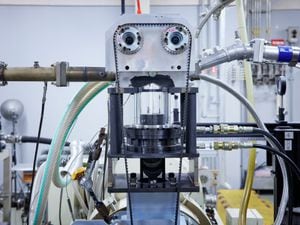Nissan’s new powertrain has the thermal efficiency of an F1 engine
The firm says it has built an engine with 50 per cent thermal efficiency – matching Mercedes’ F1 car.

Nissan says it has developed a new petrol engine with a thermal efficiency rating of 50 per cent, making it one of the best in the world in this regard.
Thermal efficiency is essentially how much of the fuel put into the engine is turned into useful output, i.e. powering the car. Most modern engines have a rating of about 40 per cent, with the rest lost to things like heat and sound.
For further context, the most thermally efficient engine made so far is used in the Mercedes-AMG Formula 1 car. That’s also rated at 50 per cent.
There is a slight catch with Nissan’s effort, though. This powertrain represents a development of Nissan’s e-Power system, which uses a petrol engine to create electricity that charges a battery. The battery in turn fuels an electric motor to turn the wheels.
This is sometimes referred to as a ‘range extender’ electric vehicle rather than a hybrid, because the petrol engine cannot directly power the wheels.
The result of this more thermally efficient engine is reduced vehicle CO2 emissions.
Toshihiro Hirai, senior vice president of the powertrain and EV engineering division, said: “In pursuit of carbon neutrality across our product lifecycle by 2050, Nissan aims to electrify all new models launched in major markets by the early 2030s.
“Nissan’s electrification strategy promotes the development of e-powertrains and high-performance batteries for EVs, with e-Power representing another important strategic pillar.”
Nissan says the fact that the engine is only charging the battery means it can be run at its optimal range of speed and load. Engines that power the wheels need to work across a wide power band, reducing their efficiency.
To achieve 50 per cent thermal efficiency, the firm developed STARC, which stands for ‘strong, tumble and appropriately stretched robust ignition channel’. The concept improves the flow of the air-fuel mixture pulled into the cylinder as well as ignition, which allows it to burn a more diluted air-fuel mix at a high compression ratio.
In testing, it achieved 50 per cent thermal efficiency by running the engine at a fixed RPM and load and combined it with waste heat recovery technology.





